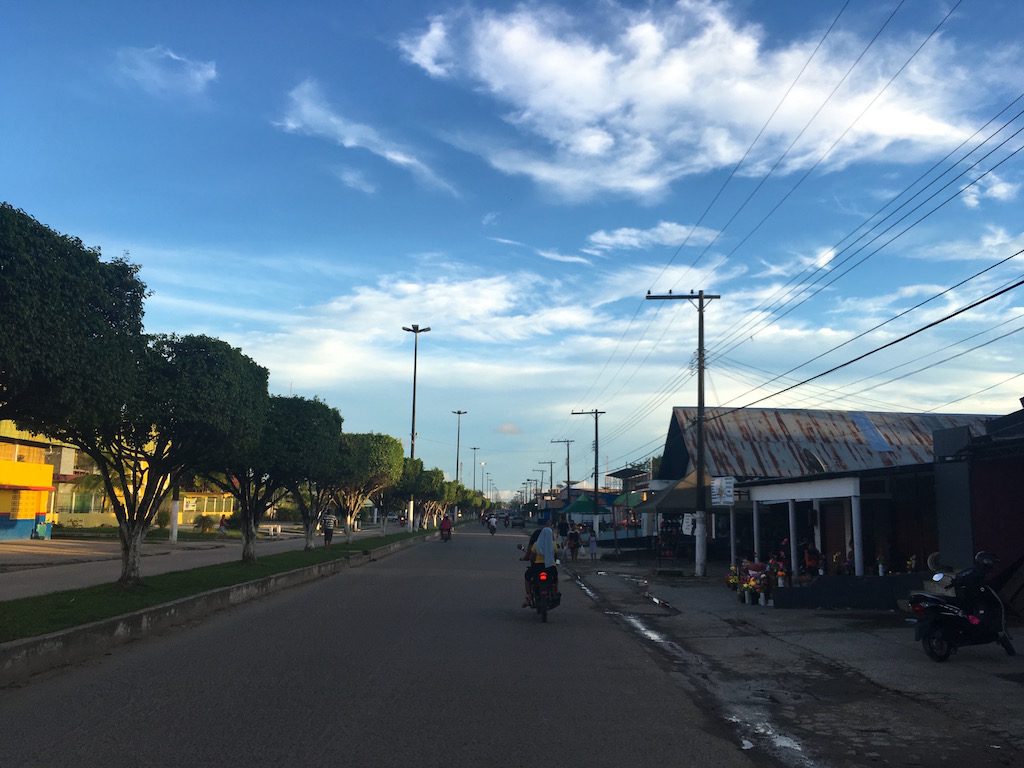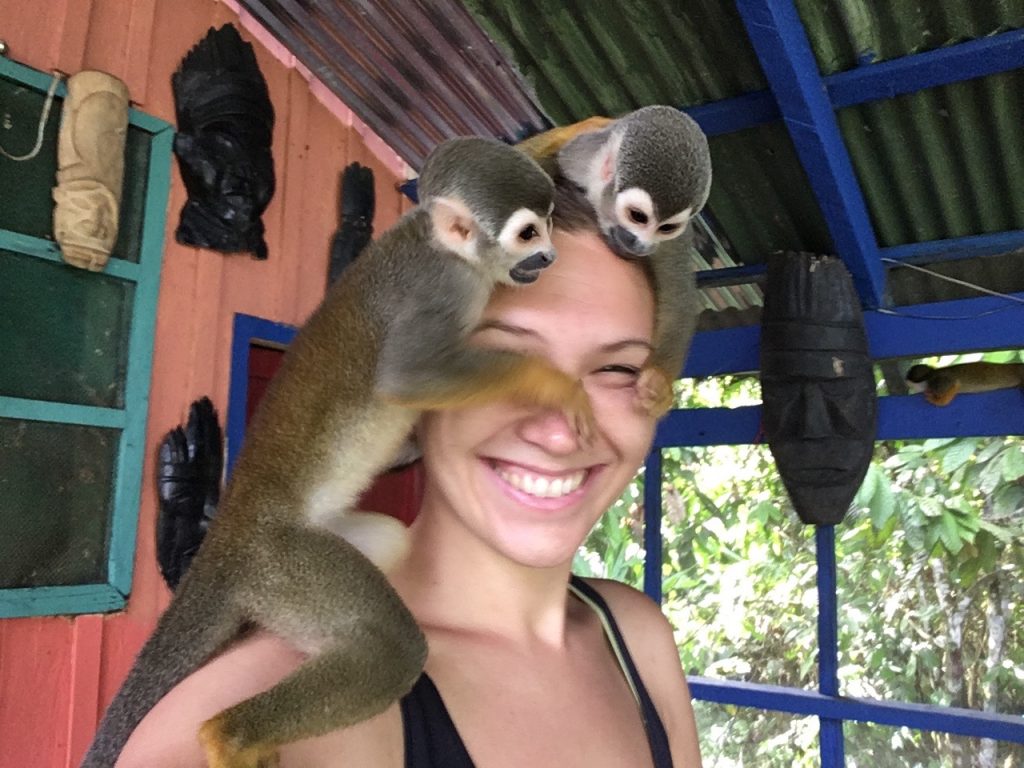Things to do in Leticia // Colombian Amazonas


Leticia: Location & History
Leticia is located in the Amazonas, and the southernmost city of Colombia. The next big city is far away and you can only get to Leticia by plane or boat. It is almost isolated and more than 800 km away from the closest national highway. Leticia is located in a triangle, close to the Peruvian and Brazilian boarder. By taking a boat for 5 minutes and crossing the river, you are already in a small town in Peru. The Brazilian boarder is easy to cross by land way, there is no boarder checkpoint. If the people wouldn’t have told me, I wouldn’t even have realized that I crossed the border. The first town in Brazil is Tabatinga, only 20 minutes from Leticia. The town is of the same size as Leticia, with a population of 40.000 people.
Leticia was officially founded in 1867 and was part of Peru back then. After an armed conflict between Colombia and Peru, Leticia became part of Colombia in 1932. In the 1980ies, the city became an urban center with health and education services. Since 1991 Leticia is the capital of the Colombian Amazonian departure.


Things to do in Leticia
Jungle Tours
This is what you come here for! Leticia is a nice relaxed city, but you have to go into the jungle and see the stunning rain forest, friendly Indians and unique wild animals that are living in the Amazonas. There are tour operators, offering different tours, from day trips, to overnight trips in the jungle. The hostels are also giving information about the tours or tell you where to book it. As you can read in my other blogs, I met a local who was taking me around, so I didn’t book one of these tours. But everyone I was talking to spent at least a night in the jungle and they loved this experience.


Boat trip to Puerto Nariño
Puerto Nariño is a colorful village, two hours by boat from Leticia. I stayed in the Guesthouse Alto del Aguila, where I was able to interact with wild monkeys who are living in this area. Find more details about this amazing experience in my blog Alto del Aguila.
Whenever you take a boat in the Amazonas, watch out for Pink dolphins (locally called bufeo): Nobody knows how the dolphins ended up living in freshwater, but this unique creature is one of the most amazing animals of the Amazonas. I saw them a few times from the boat, but I was not able to take a picture of them. They are not jumping out of the water, as you would have expected, they are just coming to the surface for a short moment.


Museum (Museo Etnográfico)
In this museum you can learn about the history, Indians and culture of the Amazonas. I learned that the first humans settled down in the Colombian Amazonas already 8.000 years ago and started cultivating and developing a decent agriculture with local plants. There is a big ethnical and linguistic diversity and various socio-cultural complexes spread over different geographical areas. There are 36 different languages spoken. The main tribes around Leticia are: the Ticunas, Huitoto and Yaguas.

Bioparque Etüena
Carlos, a scientist who is running the Parque, created this place to teach visitors about the nature, plants, animals and locals and its traditions of the Amazonas. First, he showed us different utensils, which are used by the indigenes and told us about local rituals. I learned for example that when a girl gets her period for the first time she is separated from her tribe and has to live alone in a small house or tent. She is only surrounded by women who teach her the most important things for her life, like how to manage a household, cooking and which plants to use for different purposes. Originally, this ritual took 3 years, but nowadays it takes 3 months. When the ritual is finished, the girl becomes officially a woman and the village is celebrating this occasion for 3 days with a lot of dancing and alcohol.
Then he showed us different animals, like snakes, fishes and frogs that you can only find in the Amazonas. There are living animals and also dead ones, groomed in glasses. He even has a skeleton of an Anaconda there. Carlos is researching since decades in the Amazonas and likes to share all of his knowledge. I learned that there are more than 3.500 different species of fishes in the Amazonas. If you go on a jungle tour remember: there are a lot of tiny and colorful frogs, they are beautiful, but they are very poisonous and you should never touch them.




The Brazilian Border
My local friend drove by bike with me over the Brazilian boarder and after 5 km we reached a restaurant with a stage where musicians were performing. The locals go there especially on Sundays to hang out with their family and friends, eat, drink and dance – it was very vivid. We sat down and watched the sunset over the river. The sunsets in the Amazonas were one of the most beautiful ones! On the street to Brazil, there is only a little sign at the “border” that informs you, that you are in Brazil now. There is no border control, everyone is driving in and out of the country easily. If you want to eat in Brazil, you need to change money first. There is a small money exchange right at the border.

The Market: Try local fruits & vegetables
On the market they have shops where you can buy almost anything and one section for fresh food. It’s the perfect place to get to know local food, fruits and vegetables. There are a lot of fruits and vegetable growing in the fertile area of the Amazonas, and some of them you will only find there! I really liked these ones the most:
- Copazu is a fruit with a brown hard skin and very inside sweet. I drank it with yoghurt and it tasted like lassie and was very good.
- Camu-Camu is a small round fruit, where a pink juice is coming out when you just press it. It tastes very nice and has a lot of vitamin C.
- And if you are ready for a local delicaties, try fried maggot.



Floating houses along the river
If you stand in front of the market, having the river in front of you and then walk to the right, there is a bridge which leads through the river. There are floating houses on the river, where Indians live in basic houses made of wood. The living conditions are not easy for them. When the river gets higher, the water floods the houses and everything gets wet and broken. The government offered them other places to stay to get the people out of the river, but they always return to the river and choose to stay there.



Park (Parque Santander)
Parque Santander is a small park in the middle of the town. There is a church where you can walk up and have a look over the city. Every morning and evening, between 5:30 and 6:00 pm, there are screeching parrots (pericos) flying in and out of the park. It doesn`t sound that entertaining, but it’s really something special to see! There are thousands of parrots flying in the park looking for a place to sleep in the trees. They are making a loud sound and flying very fast and low. They are so many that the trees get full of them. They are sitting next to each other very close, covering every single branch.
There is also a small pond in the park, with the plant Victoria Regia in it, which is a big round leaf floating on the surface of the water. The special thing about this plant is that it can carry up to 20 kg and will not sink!



[…] get out of the jungle, there are only two ways: by boat or by plane. I decided to go by boat from Leticia to Iquitos and take the chance to see more of the Amazonas. This article is about my experience on […]
[…] about 7.700 inhabitants. The village is located 75 kilometers – a two hours’ boat ride – from Leticia. The atmosphere is very relaxed and quiet, also because there are no cars. The boat ticket is […]
Fantastic blog and great info!! thank you!! I’ve sent you a message via insta as well. My handle is @Keshdog84
I’m curious if it’s possible to find an Ayahuasca guide in Puerto Narino, or is it only in Leticia?